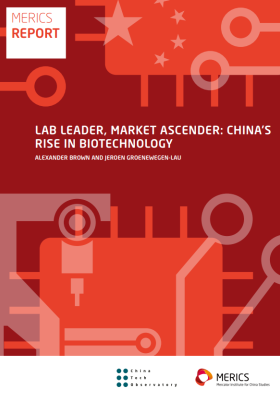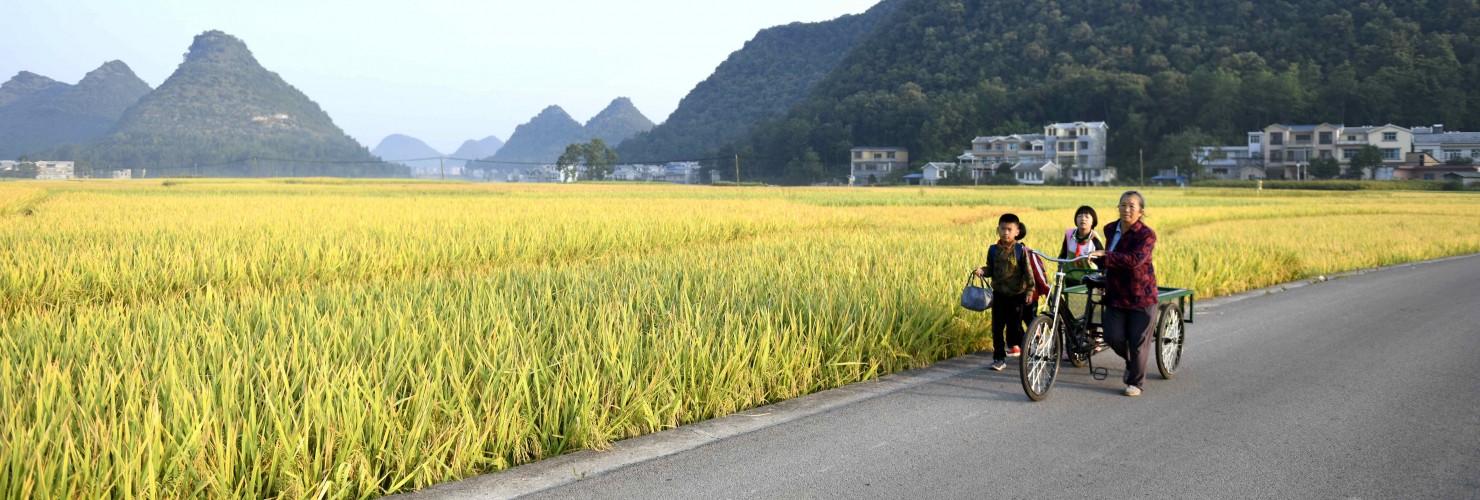

China’s widening divide
Beijing’s promise of “moderate prosperity” holds more for urban than rural areas, says Mayya Solonina. The pandemic has only increased disparities between town and country.
China was the first country to encounter the novel coronavirus, and its entire economy was hit hard as Covid-19 quarantine and social distancing regulations took effect. But the epidemic was no social leveler. Rural migrant workers proved especially vulnerable to the economic shocks due to limited access to social services in big cities. Rural populations – some 40 percent of China’s population – are falling further behind their urban counterparts. Without government support and job-placement services, social tensions could rise.
Millions of migrant workers lost their jobs in the wake of Covid-19
The plight of rural China should not be underestimated. As Covid-19 cases multiplied at the start of the year, millions of migrant workers lost their jobs, which in turn raised the poverty rate in the country’s rural areas. Workers sent lower remittances to their home villages, increasing the number of people in need. Even though there are no official statistics, there are clear indicators for the size of the problem. In March, China’s official unemployment rate in China was 5.9 percent, or approximately 27 million people. Adding unemployed migrant workers, around 60 million people, the unemployment rate would rise to 10 percent. On top of that, the severe floods in Central China have again affected rural areas more than urban ones.
School shutdowns hit rural areas particularly hard
And children suffered, too. Migrant workers’ loss of jobs and income affected their daughters and sons. School shutdowns for pandemic prevention increased the already significant rural urban education disparity: many poorer rural families could not afford modern communication devices to allow their children to learn online education. Many children in rural areas do not have their own mobile phones, which are crucial for online education. Most of the times these children use their parents’ phones, and if parents decide to go to the city in search of job, the children will have no means to access online classes.
Despite the problems of the rural populations, the Chinese government’s attention is elsewhere. Authorities have pledged to create 9 million new jobs by the end of this year to accommodate a new wave of around 8 million university graduates. The Chinese Ministry of Education (MOE) on in March created an online recruiting platform for university graduates. The official document on the MOE website states: “A nationwide “24/7-365” (around the clock, all year round) online recruitment service platform was launched under the stewardship of the MOE, providing carefully reviewed information.” (www.ncss.cn). In less than six months, the platform has already advertised around 13 million new jobs.
The CCP sees the urban educated as crucial to shoring up its power
When it comes to putting people to work, Beijing favors the urban educated over the rural not-so-educated. One reason for this is that an employed university graduate is more useful for the Chinese economy than a less skilled worker. Compared to unqualified workers, university graduates occupy relatively well-paid jobs, leading to increased consumption. They and their mostly middle class families are also more likely to resort to coordinated pushback and social unrest if their standard of living declines. Arguably, the Chinese Communist Party (CCP) sees urban employment as crucial to shoring up its power.
Rural protests do occur, but they are easier to shut down as rural residents have fewer resources, less media literacy and education than urban protestors. The case of Wukan can serve as an example. Demonstrators successfully called for democratic grassroots elections in the town. But once public interest turned elsewhere again, the regime turned on the leaders of the protest leaders. Three years later after their initial triumph, heavy-handed tactics were used, and nine people were jailed for involvement in the demonstrations.
Rural youth is caught in a vicious cycle
Taken together, these factors create a vicious cycle for rural youth. The fall behind their urban peers due to the lack of education and lack of resources, which reduces their chances both to profit from the employment programs and stand up for their interests. This disparity between town and county does not line up with one of the CCP’s two centennial goals, its promise to alleviate poverty and build a moderately prosperous society (小康社会) by 2021.
For the CCP, poverty alleviation is primarily a game of numbers. Around 230 million rural residents are beset by the consequences of the Covid-19 and flooding. Some lost their jobs during the pandemic and then lost their houses and farmland to rising water levels. Beijing is proud of China’s “moderate prosperity”. But with so many people enduring real hardship, ending actual poverty will remain distant goal if resources aren’t distributed more evenly.
With rural residents left behind, social tensions could rise
While ending extreme poverty is meant to be officially completed by the end of 2020, rural migrants still have low wages that hardly cover their expenses, their children lack the opportunity to receive adequate education, and they are unfairly treated by the hukou system, nationwide household registration that determines where citizens can live and work, and in how far they can access public welfare and services. Rural residents would be excused for wondering how a “moderately prosperous society” can have millions of members that hardly have enough money to support their families and can quickly fall back into poverty.
With millions of rural migrants still living in cities and experiencing difficulties, social tensions could rise – much as they did in several provinces in 2017, when taxi drivers and migrants involved in the food delivery services took to the streets over pay and fuel costs. A report by China Labor Bulletin states that China’s workers will continue to show their concerns publicly as long as there is no adequate job-placement services and salaries remain low.
About the author:
Mayya Solonina is an intern in the Politics and Society program at MERICS from July until October 2020. Before coming to MERICS, she was a working student at the German Institute for Global and Area Studies (GIGA) Berlin Office, researching migration in Greater China and internal migration policies within the People’s Republic of China. Mayya holds an MA in Chinese studies from the University of Würzburg and a BA from National Taiwan Normal University.
The views expressed in this article are those of the author and not necessarily reflect those of the Mercator Institute for China Studies.